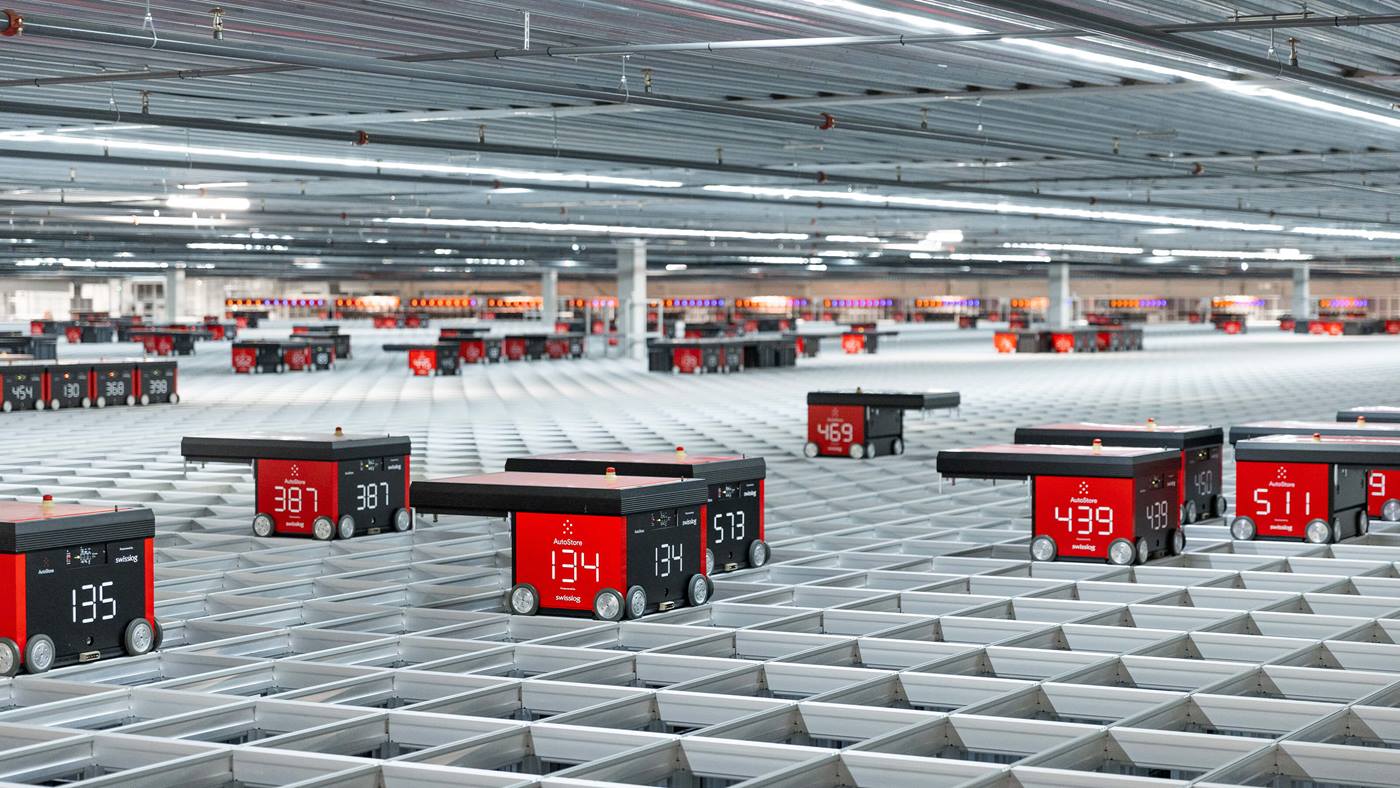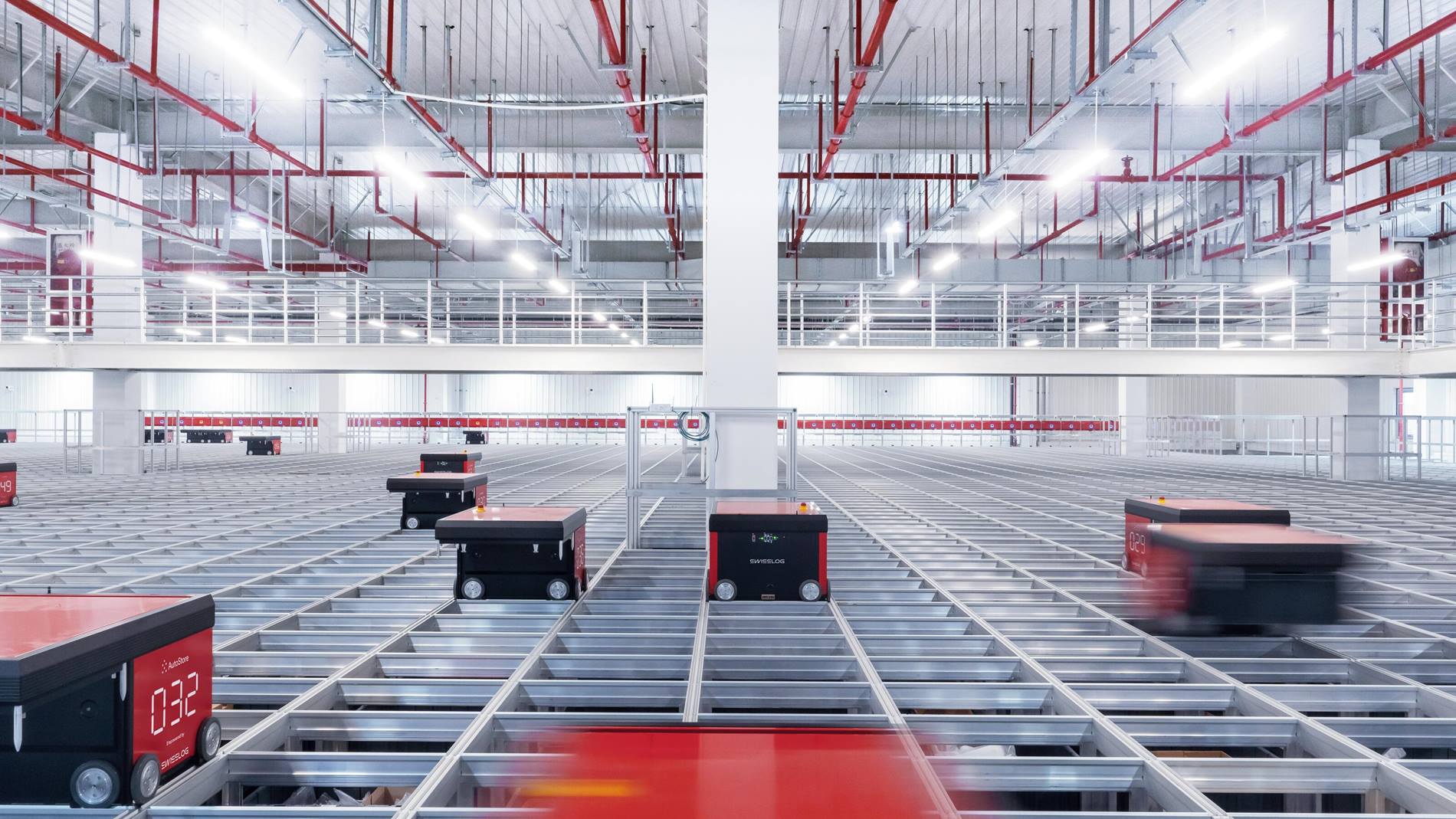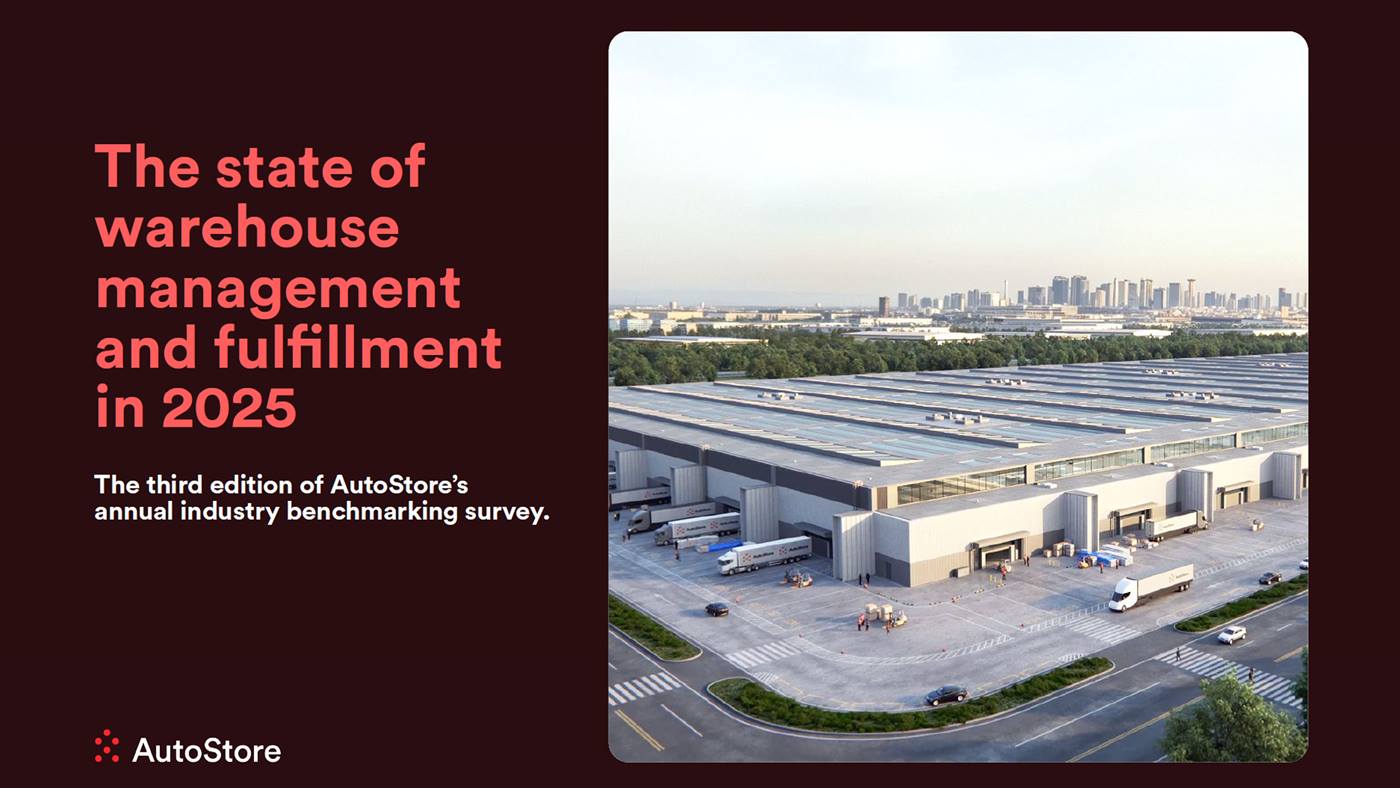Swisslog and AutoStore power high-throughput fulfillment benefits

One touch retail fulfillment
ASRS technologies like shuttles employ a “few-to-few” storage and retrieval strategy, where inventory is distributed across multiple aisles. Each module or group of aisles operates as an independent subsystem within the larger system, holding only a portion of the total inventory. In some designs, the shuttles are confined to their respective aisles and cannot cross into others, increasing system complexity. Recent evolutions allow shuttles to move between aisles to reduce the risk of shuttle failures leaving inventory inaccessible but are subject to in-aisle congestion at high volumes.When additional transportation systems, called cross-loops, are used to connect subsystems, they become bottlenecks above 10,000 units an hour, limiting the ability of pick stations to fulfill multi-line orders in a timely manner and increasing reliance on downstream consolidation.
The design of the AutoStore system uses an “all-to-all” storage and retrieval strategy, which means any robot can access any product in the system’s inventory and deliver that product directly to any pick station. This allows pick stations to be designed around the needs of the retailer and their customers, not the design of the automation system. With AutoStore, orders can be picked, packed and sealed at the pick station, enabling one-touch fulfillment at high volumes. Orders that require special handling or value-added services can even be directed to designated pick stations configured to support those services.
The all-to-all design also enables greater operating flexibility. Swisslog’s SynQ software increases this flexibility by enabling system operations to be optimized based on demand. When volumes are high, bin selection criteria can be tuned to prioritize speed; during slower times, criteria can be adjusted to prioritize density.
More capacity per square meter
AutoStore is widely recognized for its market-leading storage density, which allows retailers to automate a higher percentage of order fulfillment. That density is achieved through a tightly packed, cube-based grid that doesn’t require extra space for aisles or conveyors. In addition, the design of the system allows it to adapt to irregular spaces, improving space utilization in some facilities.
While shuttle systems can be built taller—making better use of vertical space in warehouses taller than 14 meters (45 feet)—that capacity advantage is often offset by the extensive conveyor systems required for order consolidation. Warehouse operators must ask: is the unused vertical space truly more valuable than the floor space consumed by conveyors?

Higher availability, lower maintenance
AutoStore’s modular architecture and all-to-all design eliminates single points-of-failure and allows individual components to be serviced or replaced without shutting down the system. As a result, AutoStore systems in operation today achieve global uptimes of 99.7%—a level of availability that exceeds any other automated technology with lower service costs.
If a robot stalls on the AutoStore grid, not only can other robots work around the stalled robot but Swisslog SynQ software will re-allocate the inventory underneath the stalled robot to other bins until the stalled robot is removed from the grid at a scheduled break, or a period of low demand. As a result, orders can continue to be filled while the stalled robot is still on the grid.
Shuttles systems are mechanically more complex, require more and higher cost maintenance, and are more prone to single points of failure. Large shuttle systems will generally require resident engineer support over their entire lifecycle. AutoStore, by contrast, is simpler to maintain. While Swisslog offers resident engineer services, most of our AutoStore customers maintain their own systems after being trained by Swisslog service specialists.
Built for high-volume retail logistics
With the advances made by AutoStore and Swisslog in recent years, AutoStore has closed the throughput gap with shuttles while maintaining its advantages in simplicity, density, scalability and availability.
At Swisslog, we’ve installed more than 400 AutoStore systems globally. Our experience has enabled us to refine our software platform and streamline installation and commissioning processes. We’ve also added capabilities to precisely simulate AutoStore performance based on your inventory and order data.
Curious if AutoStore can handle your requirements? Contact us to find out:














